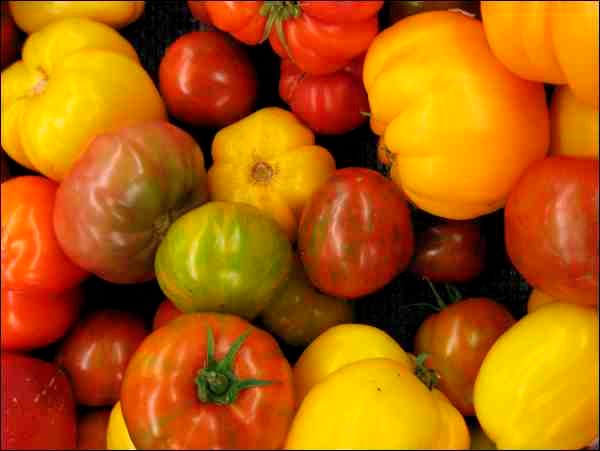Growing up in British Columbia, I can remember when producing your own vegetables in the 1970s and '80s, either in your back yard or in a community garden, meant you could be labeled as a "hippy" or "tree hugger." Some did it to be closer to nature and to control where their food came from - but it was not the norm in cities. I think some of the disdain came from having parents that lived through the Dirty Thirties or later, the war years, when families were either too poor to afford to buy fresh vegetables or fresh produce just wasn't available. So you had to have big gardens. Which meant lots of mean chores like weeding, messing with manure, hauling water, digging root vegetables, carrying heavy loads and more. That would definitely cut into time hanging with your friends.
Now, there seems to be a renaissance in home food production. Some of that could be a spillover from the "eat local" or 100-mile diet. What could be closer than your back yard, or around the block in a community garden? Another reason could be uneasiness with consuming genetically modified fruit and vegetables. Growing your own food also means you know how much pesticide and synthetic fertilizer your fruit and vegetables have been exposed to.
Along with the renewed interest in home food production has been an increased use of heirloom or heritage varieties. There's no clear-cut definition of an heirloom variety. The dictionary defines an heirloom as something valuable passed down from generation to generation. So age is a factor. Many heirloom varieties have been grown by the same family for decades, some more than a century, with enough seed saved from one season to plant in the next.
Another important characteristic of an heirloom variety is that it is open-pollinated. In other words, pollination does not involve careful mating schemes, as is the case with hybrid varieties with their genetically identical progeny. Instead, open pollinated varieties cross freely among themselves resulting in some variation in individual plants, performance, yield and seed characteristics. The advantage is that after only a few generations, you start to develop a locally adapted line. The disadvantage is that you lose the synchronicity in crop ripening and overall uniformity that comes with hybrid varieties. Also, planting seed saved from hybrid crops results in highly variable subsequent harvests. Not so with heirloom varieties. Year after year, you know basically what to expect.
Besides better flavour, other touted strengths include relatively good insect and disease resistance, lower reliance on high fertilizer inputs, and greater tolerance to stresses such as drought and heat. These characteristics have made heirloom varieties attractive to gardeners who want to go "organic." But that means additional nutrients and water are still required to produce good crops, and that pests need to be monitored and controlled as necessary.
I think the most interesting thing about heirloom varieties is the story that accompanies some of them. For example, last year I grew Arikara Yellow bean. This variety, originally grown by the Arikara Indians, fed the Lewis and Clark expedition during the winter of 1805. After they returned from their Oregon trek, they gave a sample to Thomas Jefferson in 1809, who in turn offered it for sale in 1815 from his Monticello farm.
It should not be surprising that with all this interest in heirloom varieties that there are grass-root organizations dedicated to preserving this heritage. One of the largest in Canada is Seeds of Diversity (www.seeds.ca). And every spring they sponsor Seedy Saturdays across Canada.
In North Battleford, vendors, displays and demonstrations will be set up at the Chapel Gallery on Saturday, March 23 from noon until 4 p.m. Seedy Saturday is all about gardening and local food, featuring open-pollinated garden seeds for sale and exchange as well as seed saving and permaculture workshops.
- This column is provided courtesy of the Saskatchewan Perennial Society (www.saskperennial.ca; email: [email protected]).




